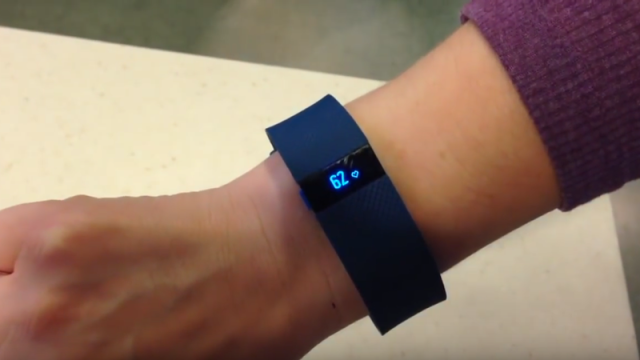A 42-year-old man from New Jersey recently showed up in an emergency ward following a seizure. After looking at the data collected by his Fitbit Charge HR, the doctors decided to reset his heart rate with an electrical cardioversion. It’s the first time in history that a fitness tracker was used in this way.
The lifesaving Fitbit. Image: EmergencyCareForYou/YouTube
When the patient arrived at Our Lady of Lourdes Medical Center in Camden, the clinical team noticed he had an atrial fibrillation (an irregular and fast heart beat), but they weren’t sure if it was chronic, or if the seizure triggered it (the seizure happened 20 minutes prior to the patient’s arrival in the ER).

Screencap showing the onset of the arrhythmia. Image: AEM
This bit of information is crucially important because it will determine whether or not the medical staff can electrically cardiovert the patient to alleviate the arrhythmia (a cardioversion uses electricity to reset the heart rate back to normal). If it was chronic, the cardioversion could dislodge an appendage clot, sending it up the aorta and possibly triggering a stroke. But failure to treat the arrhythmia could also result in a stroke. Thankfully, the medical staff noticed that the patient was wearing a fitness tracker.
Here’s what the clinical team wrote in their ensuing report, which now appears in the Annals of Emergency Medicine:
During the patient’s examination, it was noted that he was wearing a wrist activity tracker (Fitbit Charge HR, Fitbit, San Francisco, CA), which was synchronised with an application on the patient’s smartphone, recording his pulse rate as part of a fitness program. The application was accessed on the patient’s smartphone and revealed a baseline pulse rate between 70 and 80 beats/min, with an immediate persistent increase to a range of 140 to 160 bpm at the approximate time of the patient’s seizure. The pulse rate remained elevated until administration of the diltiazem in the field.
The patient’s Fitbit confirmed that the atrial fibrillation was in fact triggered by the seizure, which meant they could go ahead and perform the electrocardioversion.
Up until this point, activity trackers have only really been used by doctors and health care providers to encourage or monitor patient activity. This marks the first time in medical history that the information in an activity tracker-smartphone system was used to assist in specific medical decision-making.
The incident shows the great potential that these devices have to inform medical staff of serious problems. These trackers aren’t perfect, and they’re certainly not medical grade in terms of quality, but they can track data in a way that’s meaningful — data that doctors can use in emergency situations just like this one. Looking to the future, wearables could even trigger alarms when a health emergency happens, like a patient having a heart attack. It’s still early days for these devices, but they’re already turning out to be life savers.
